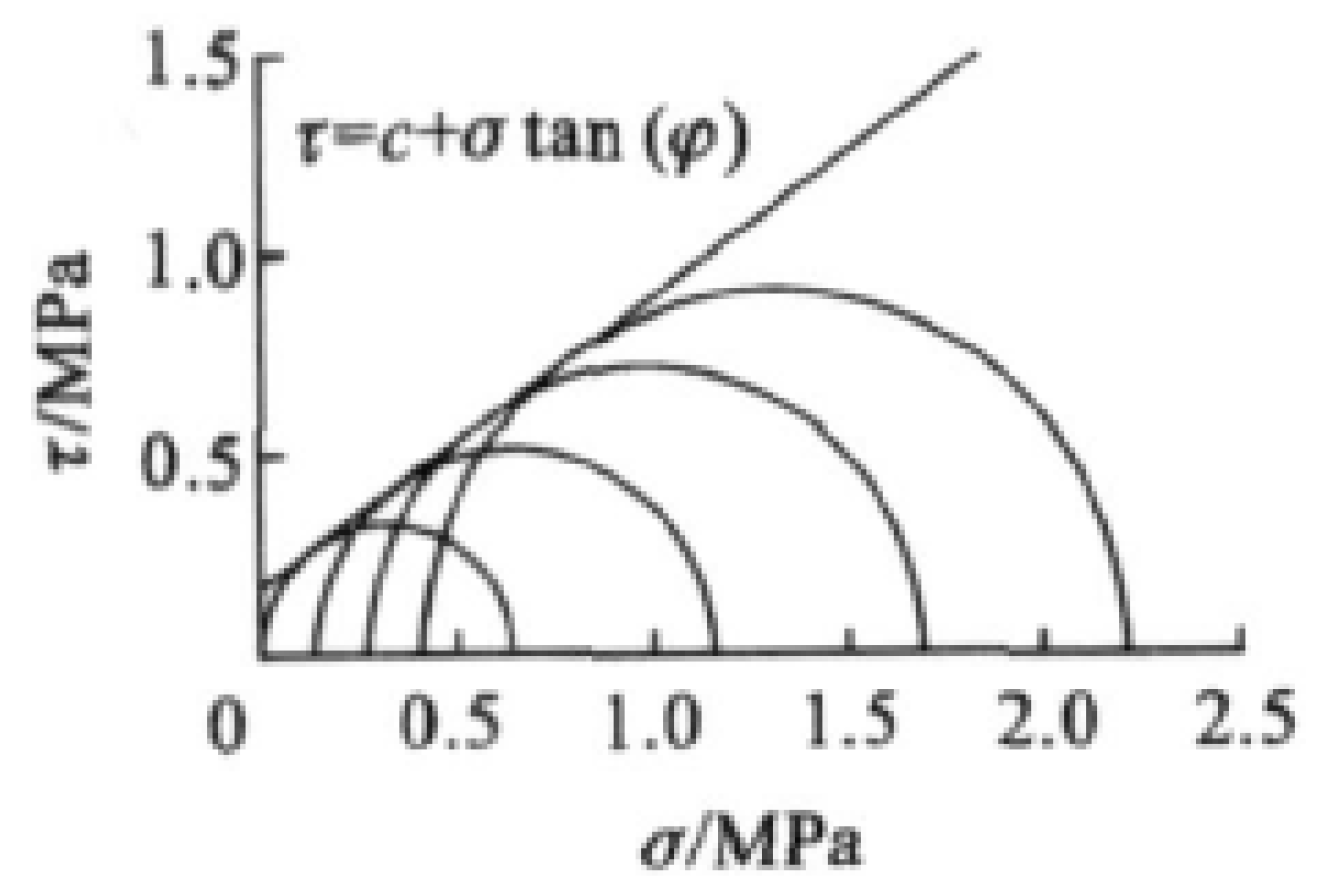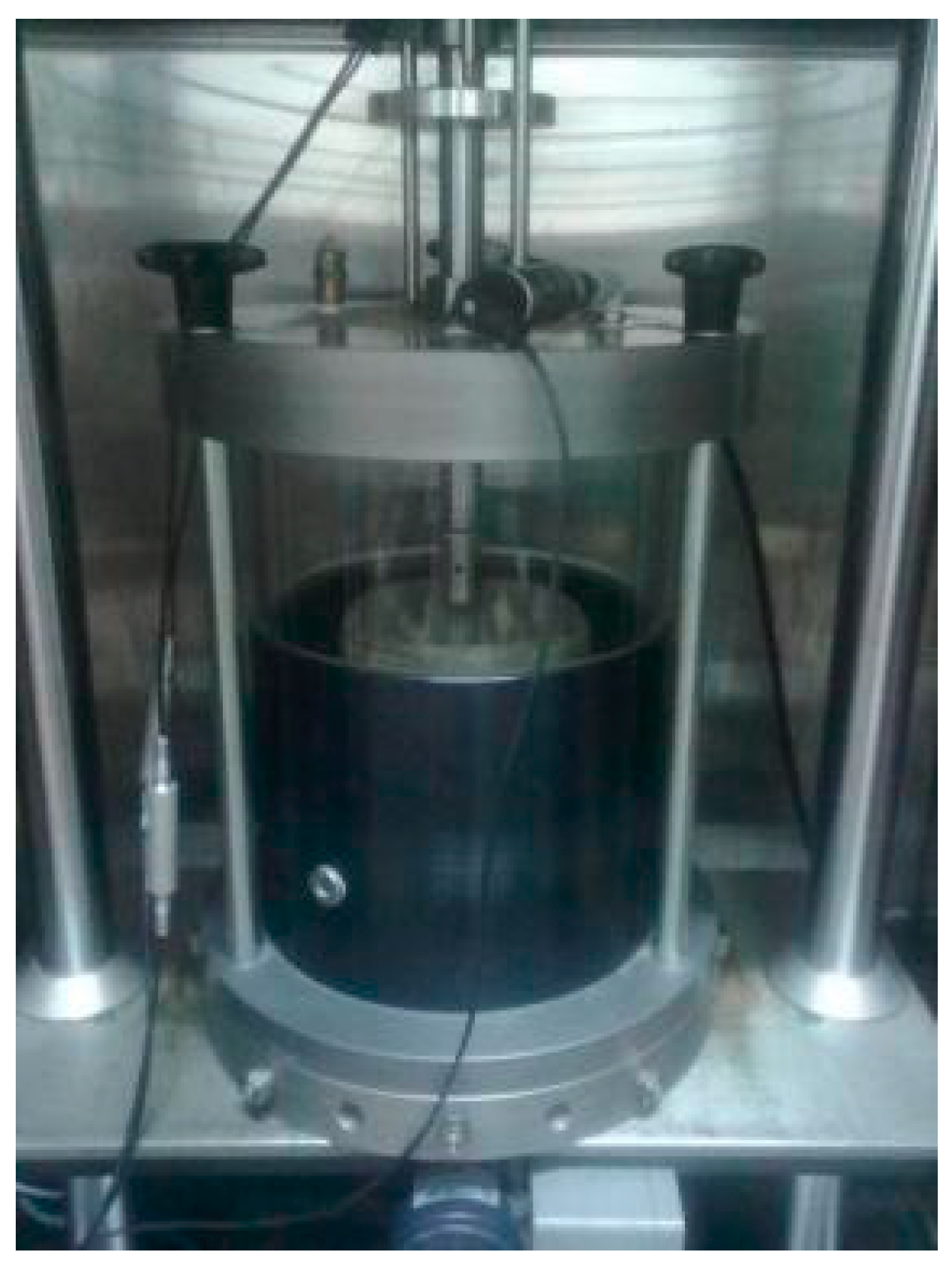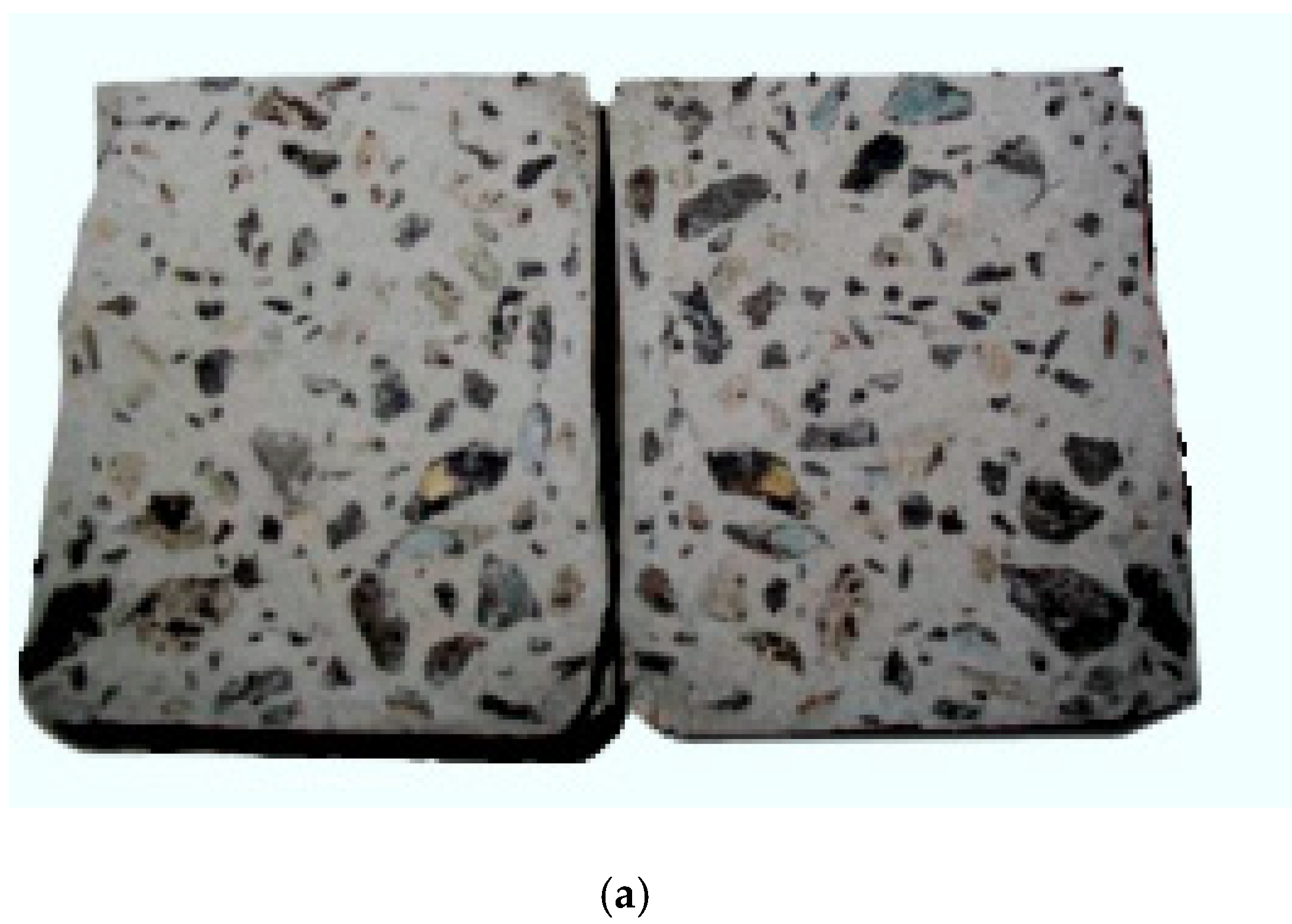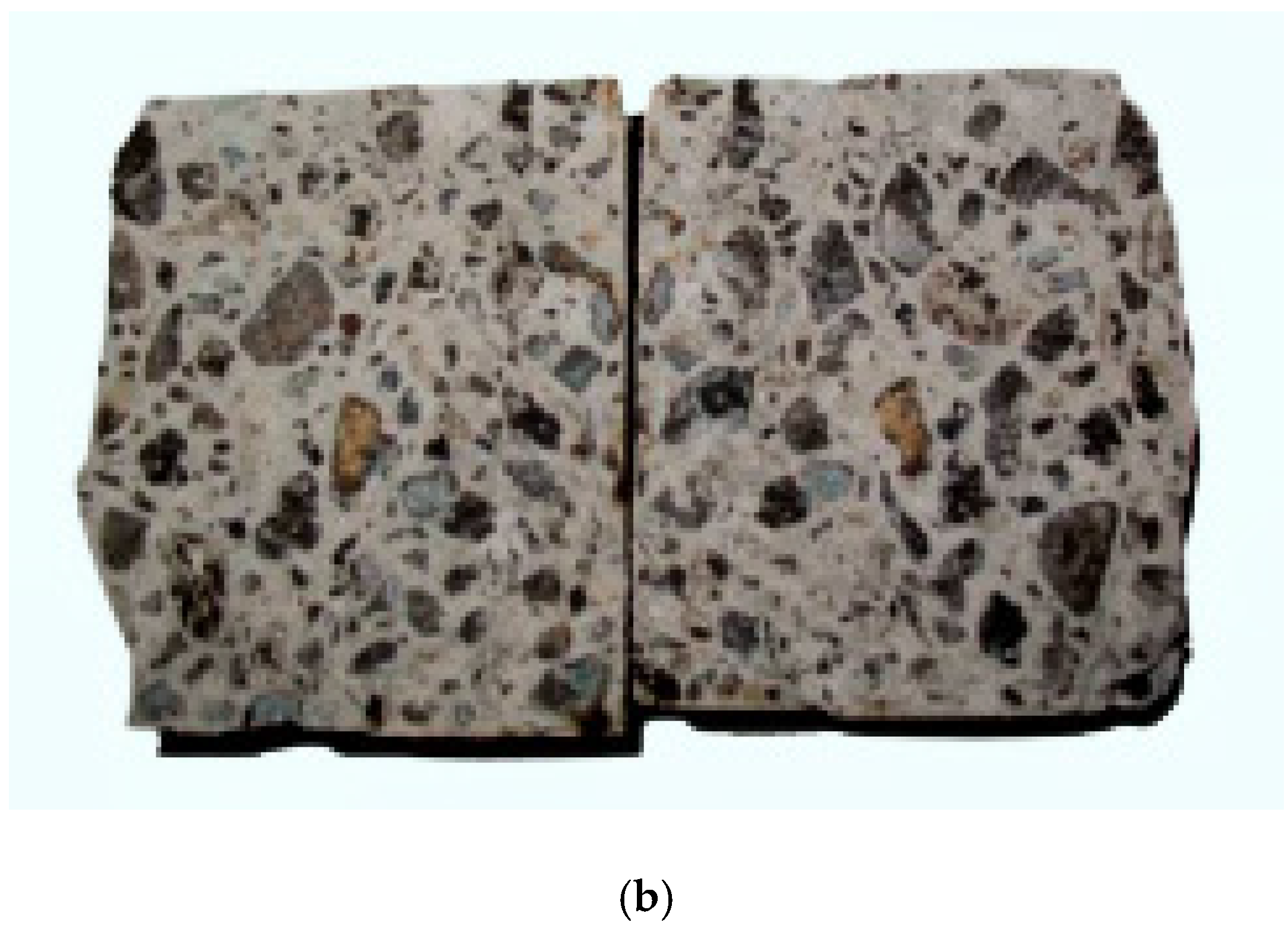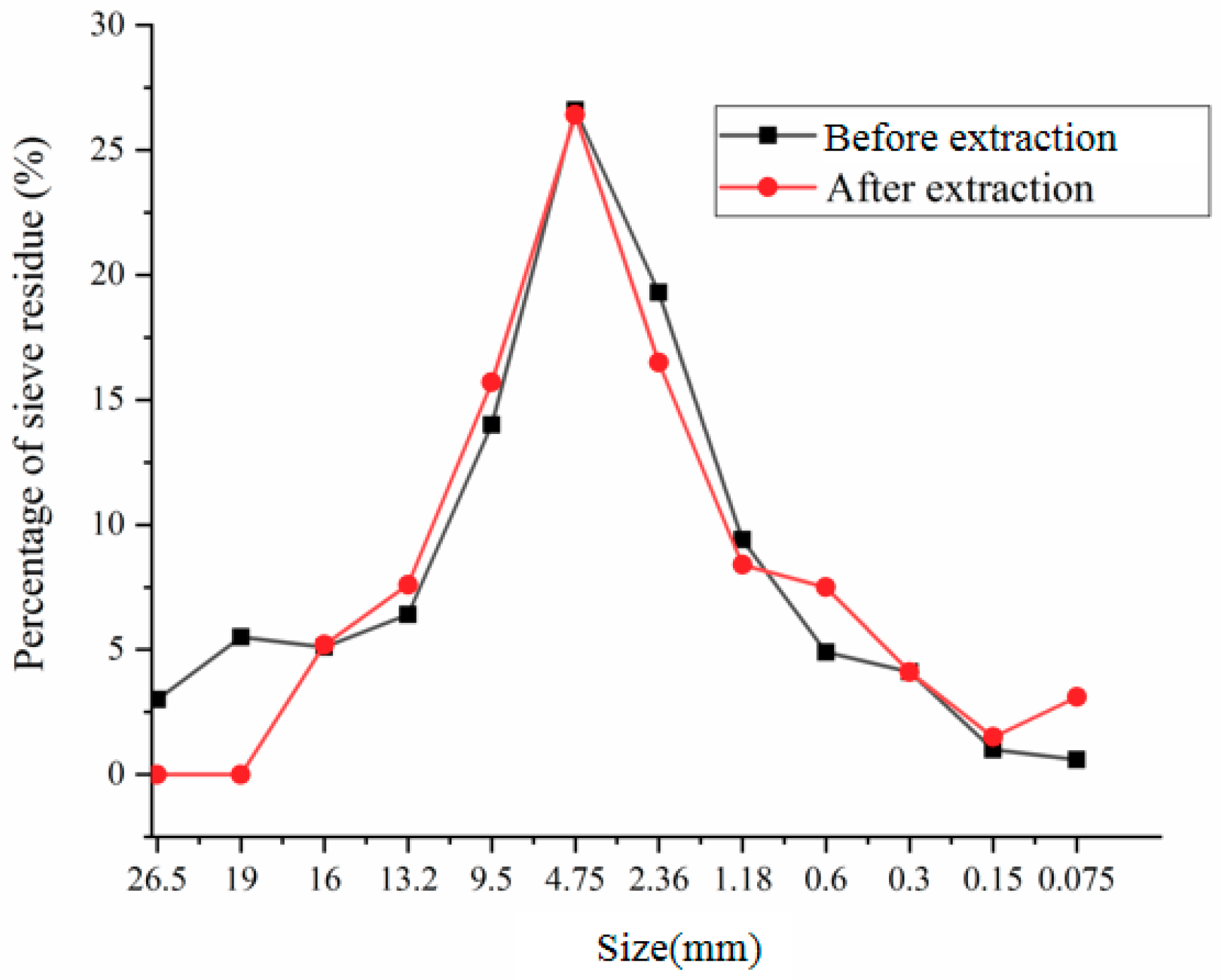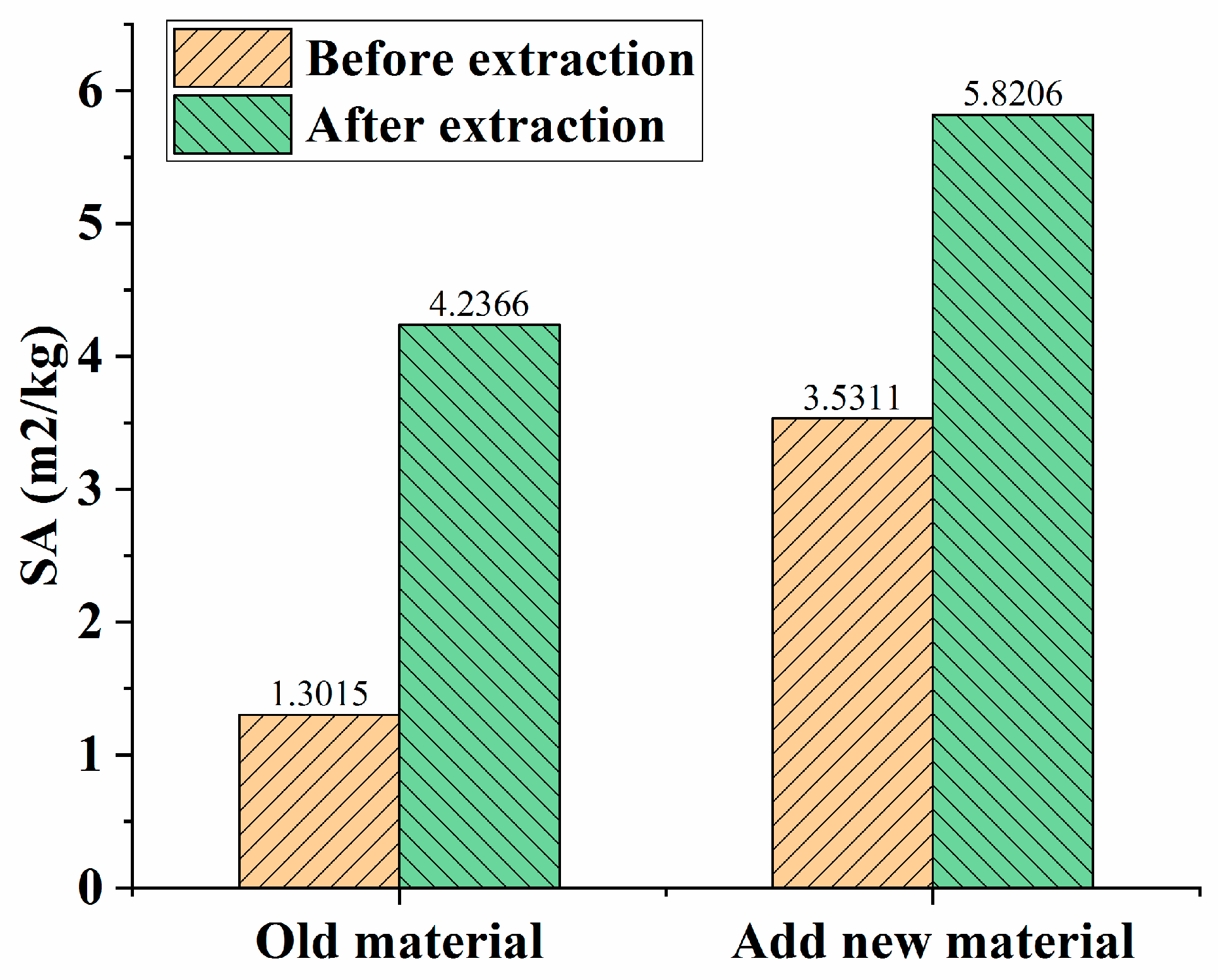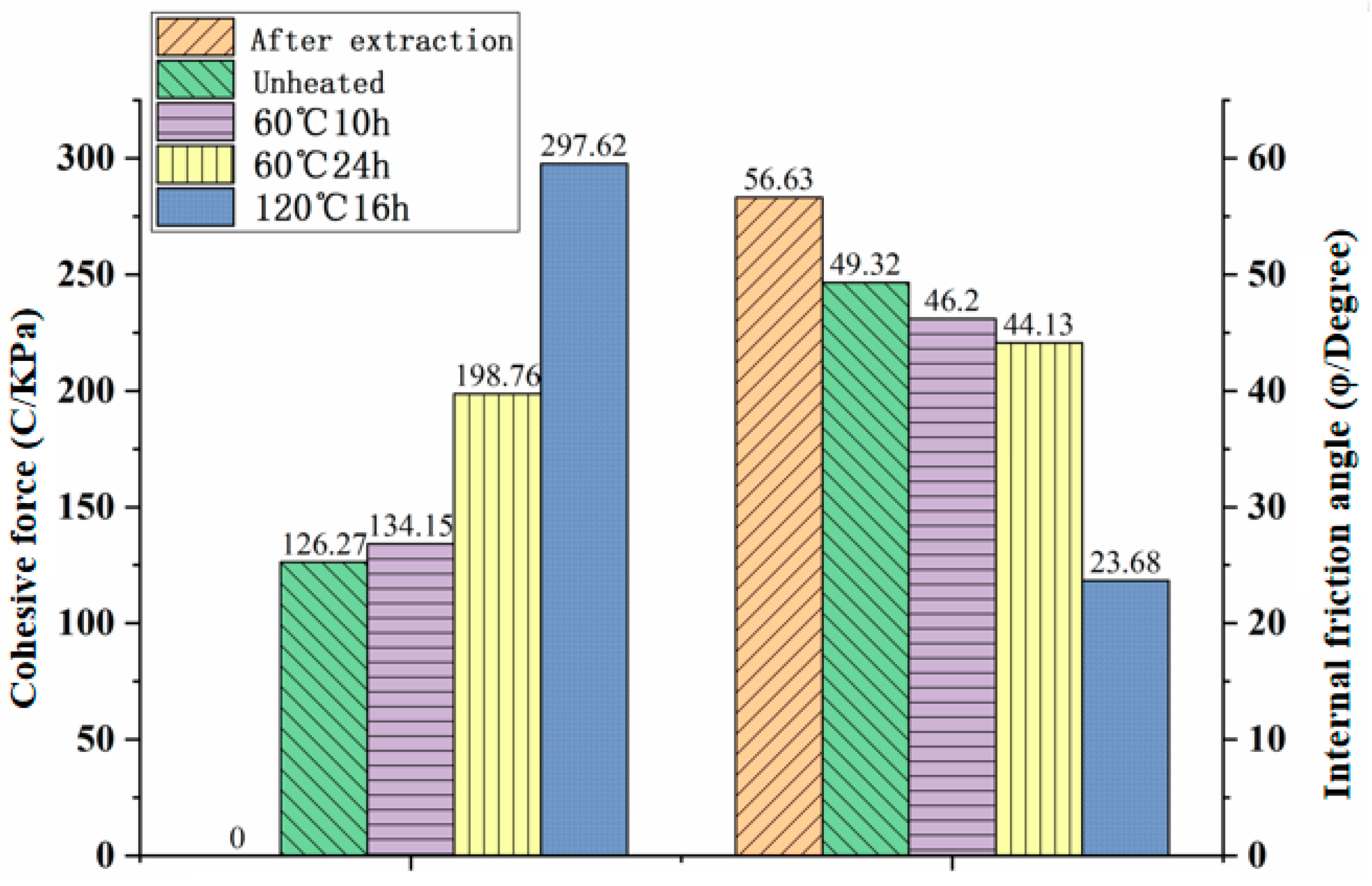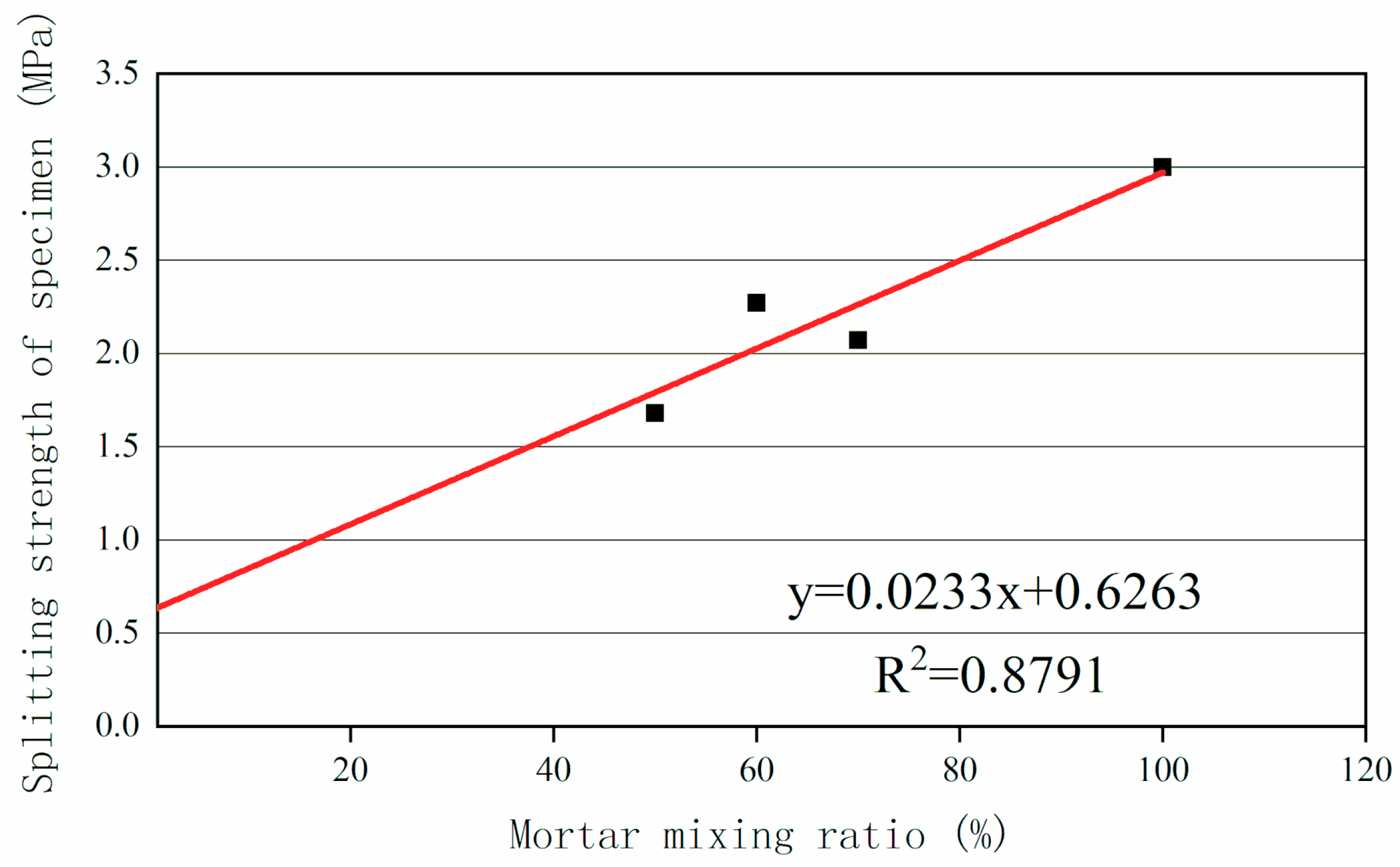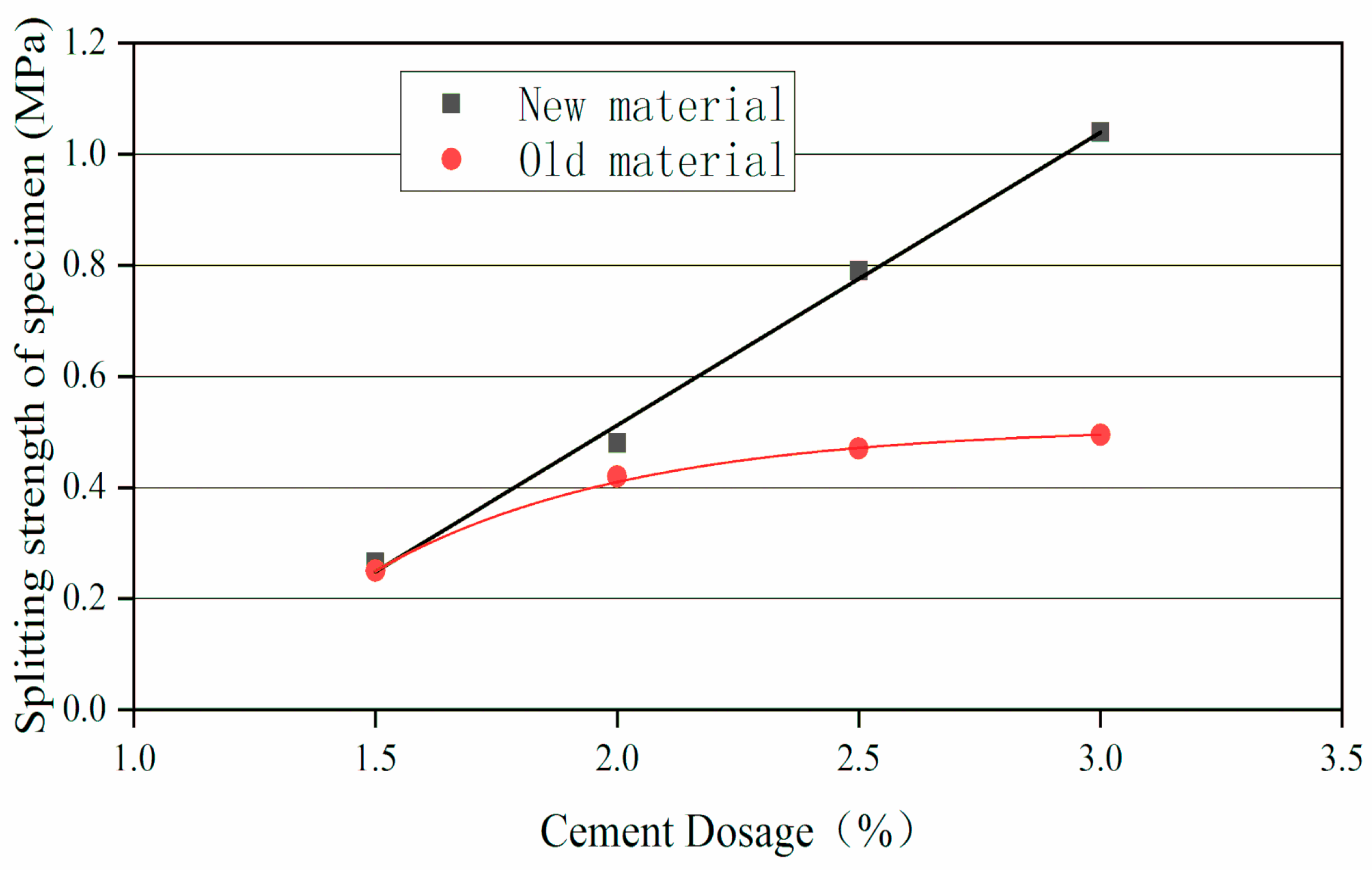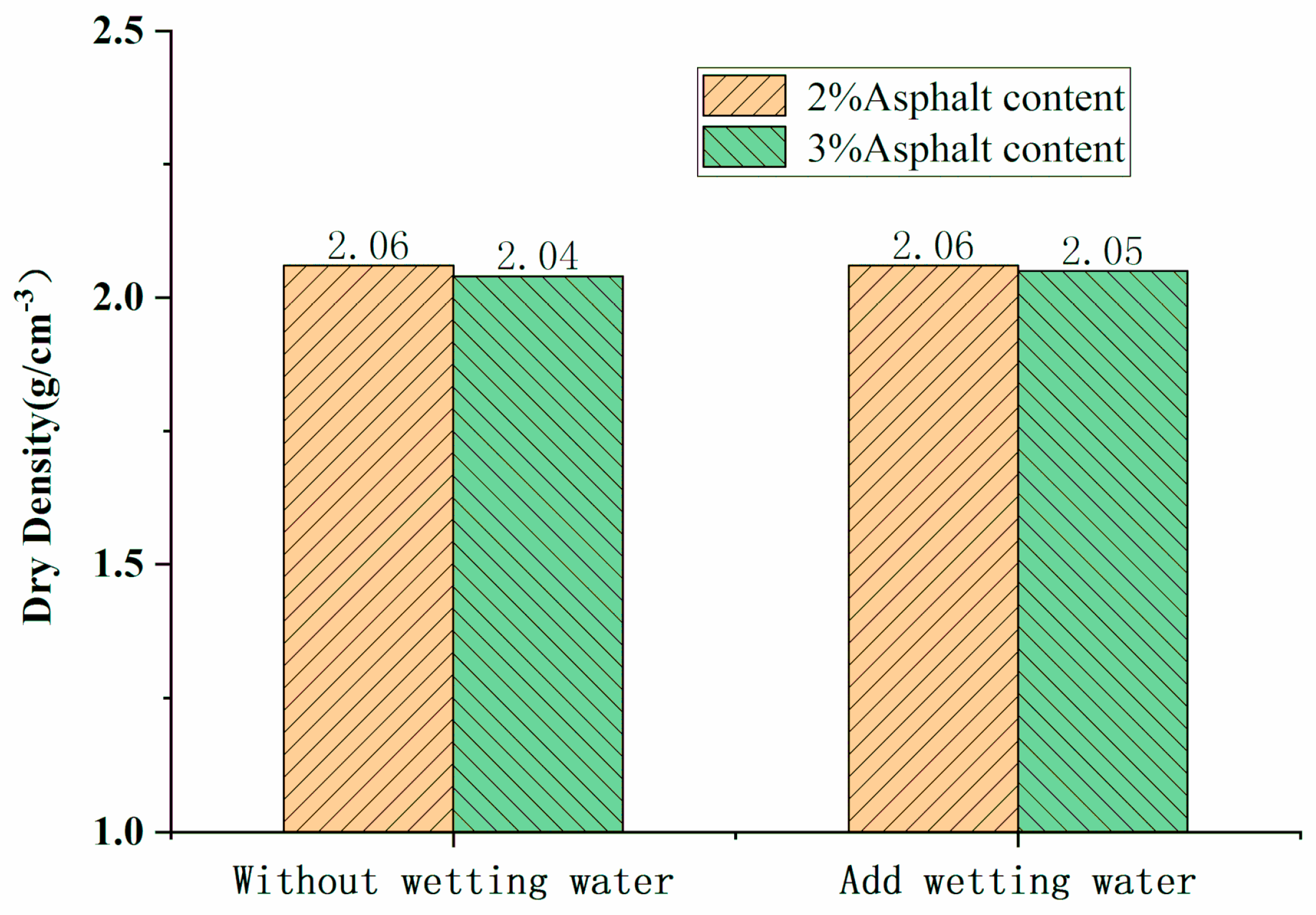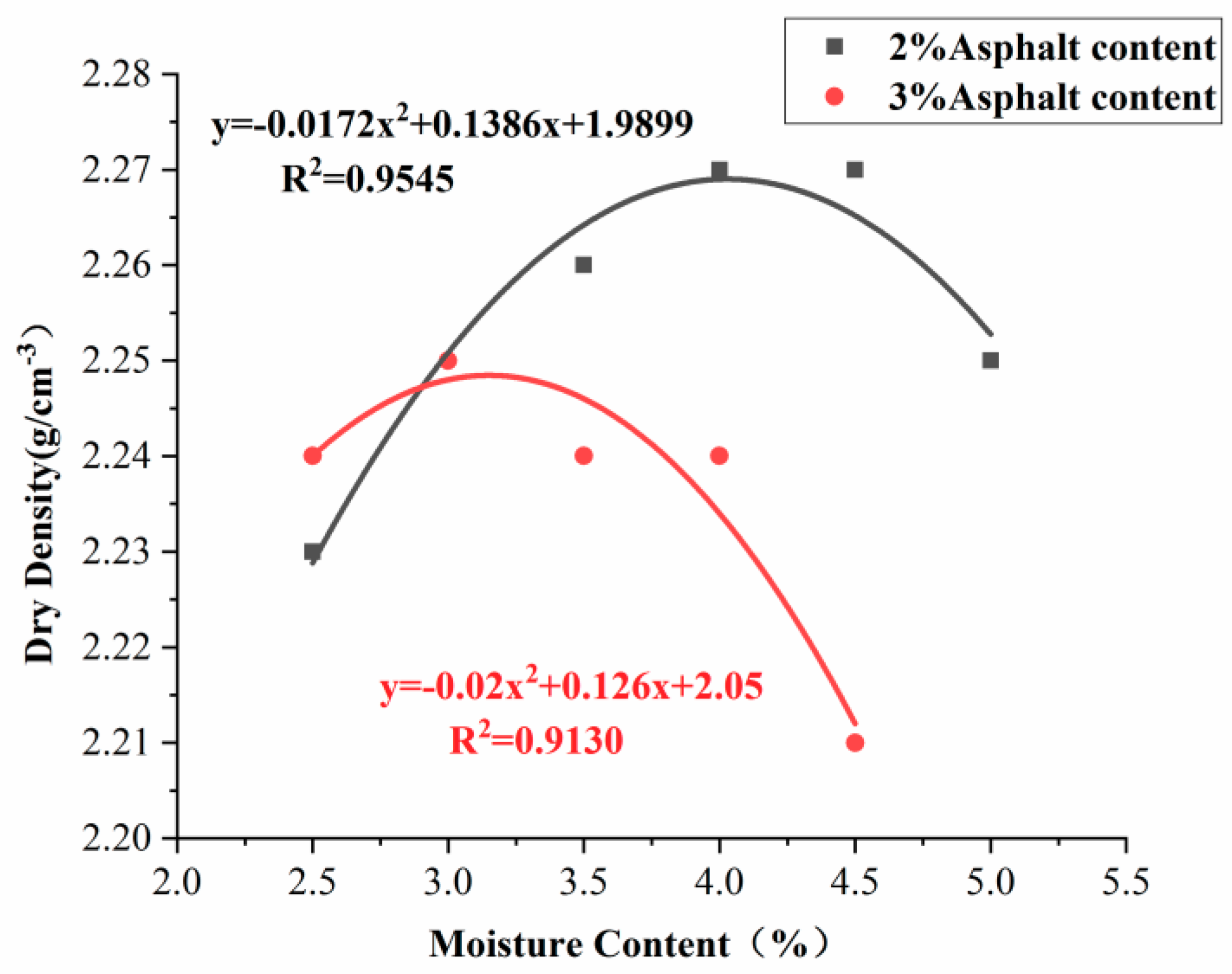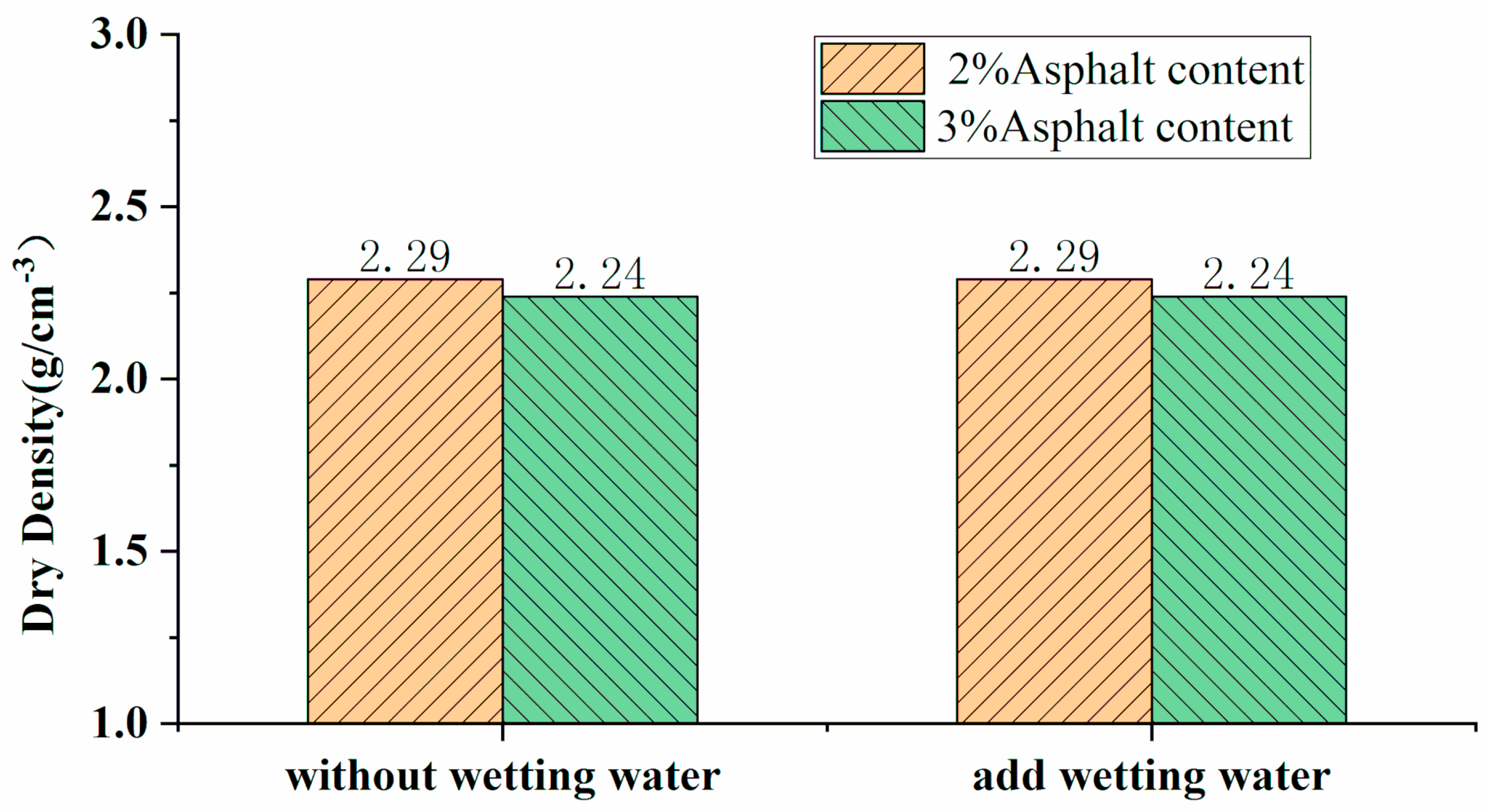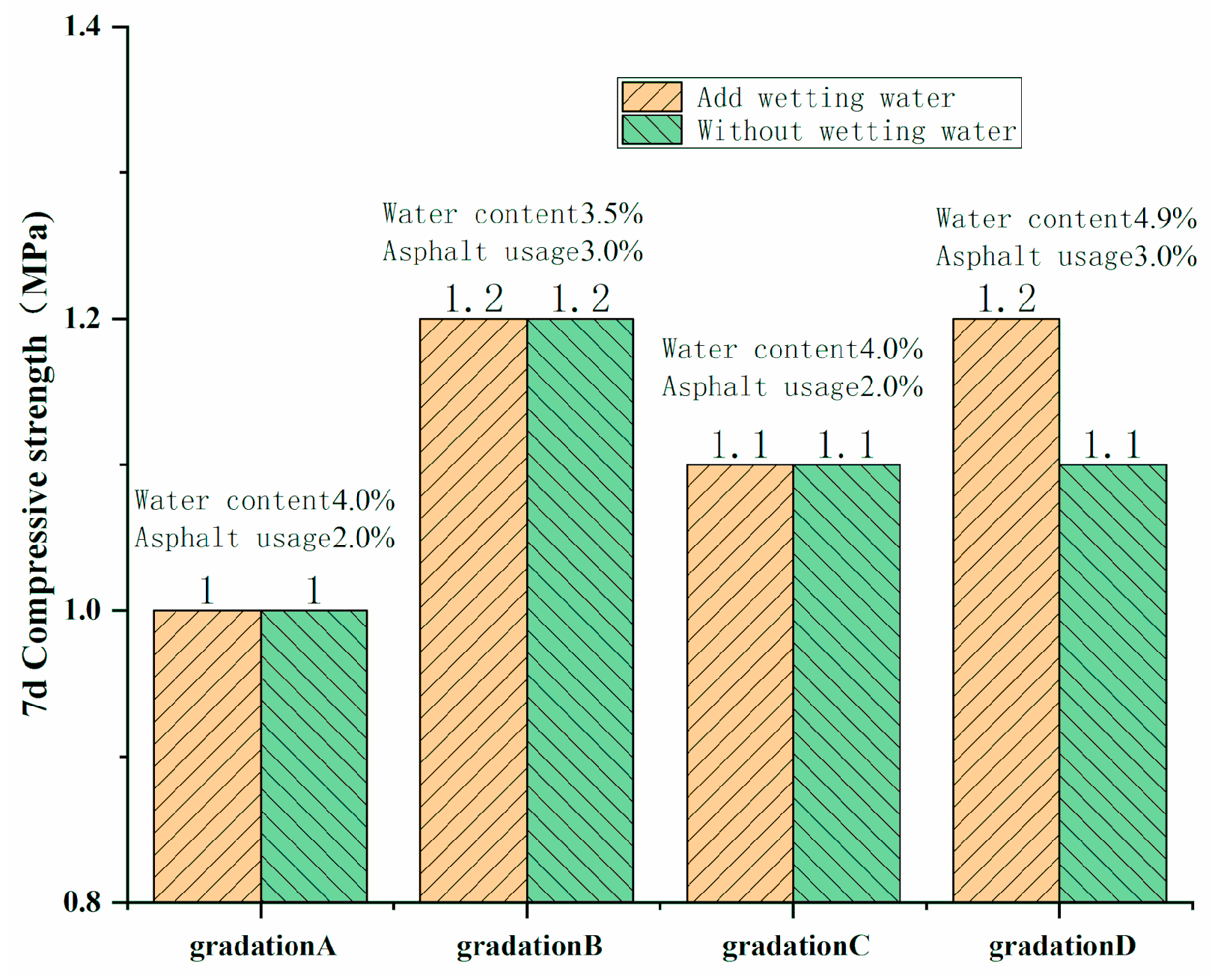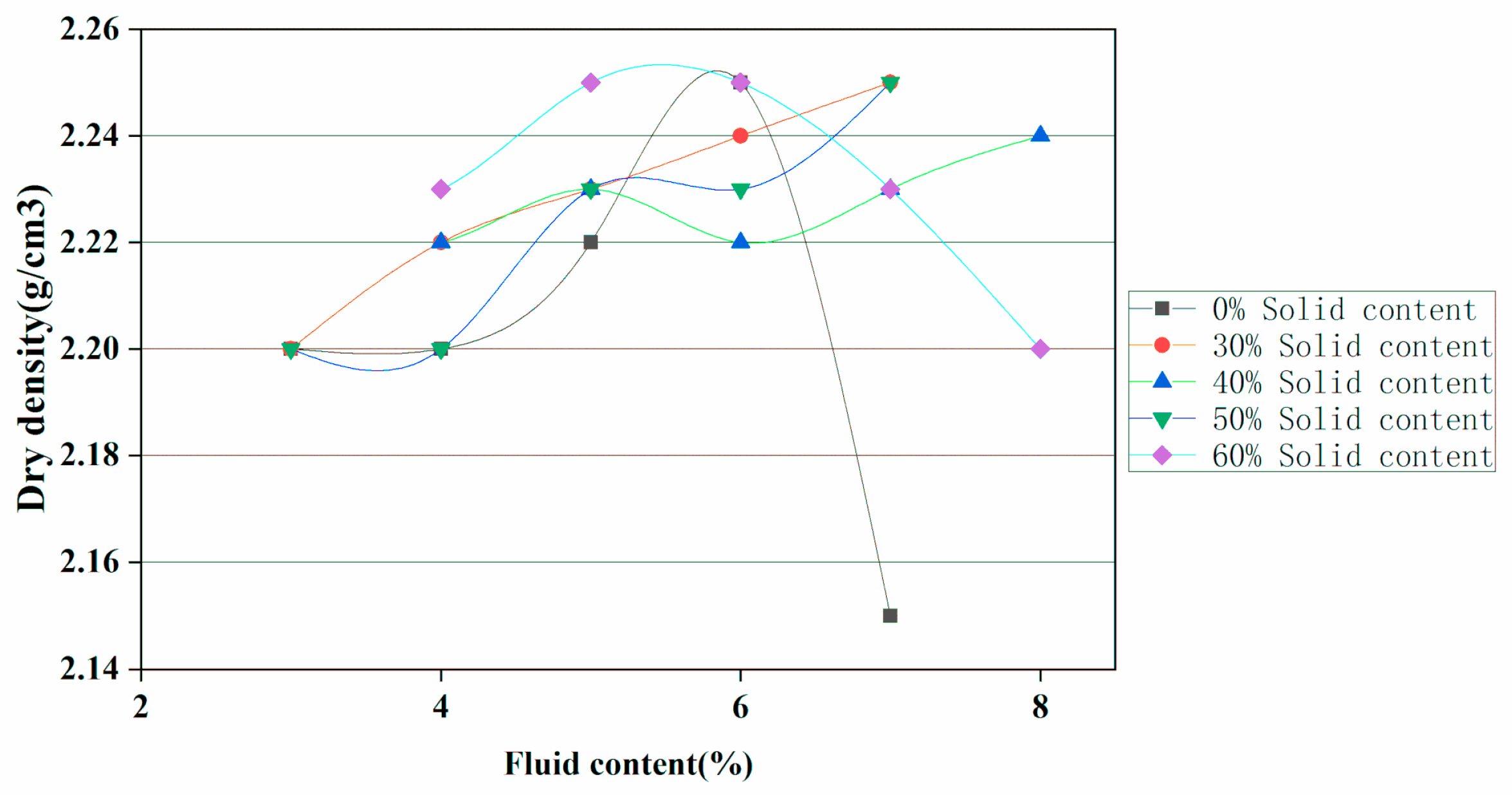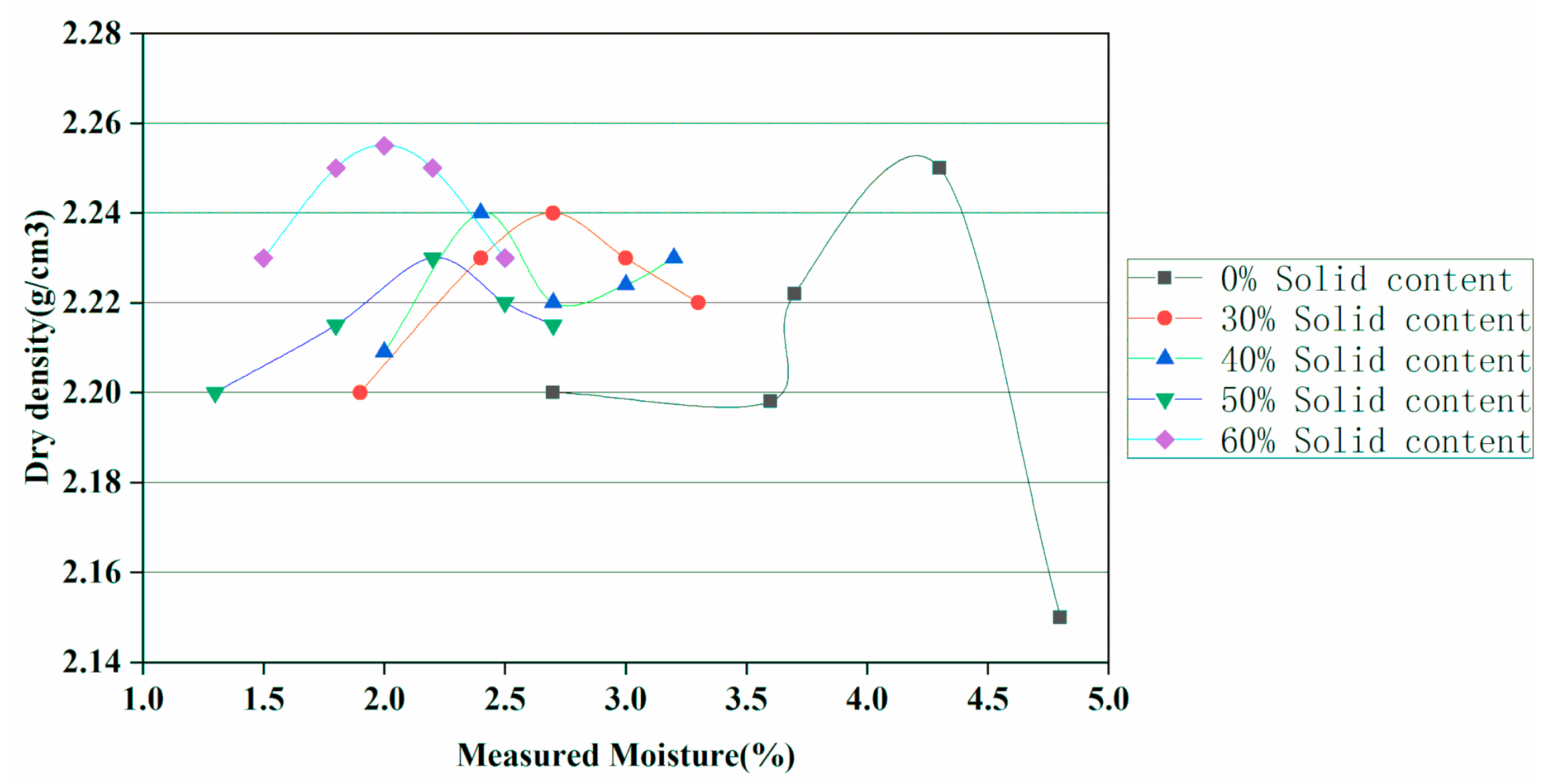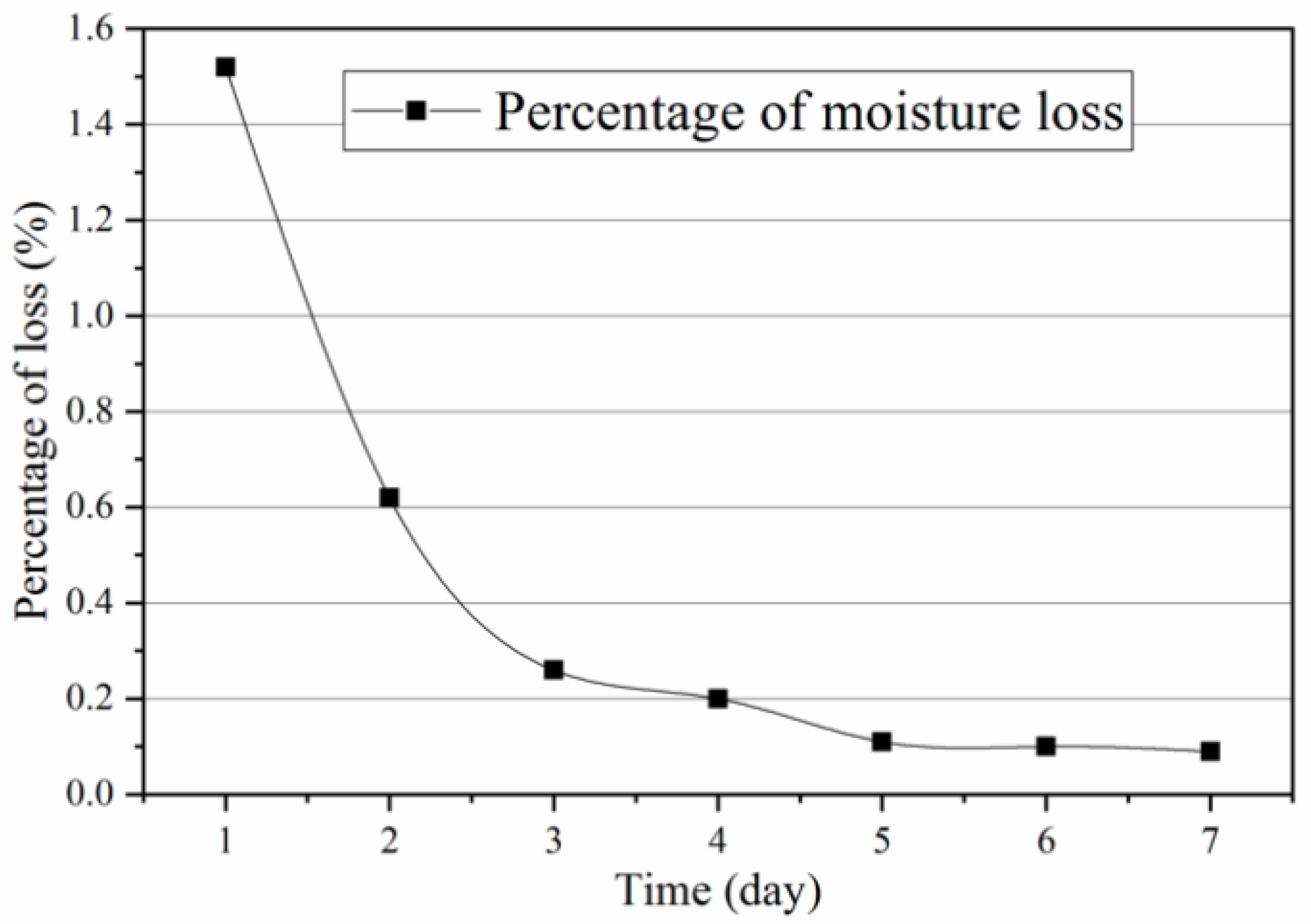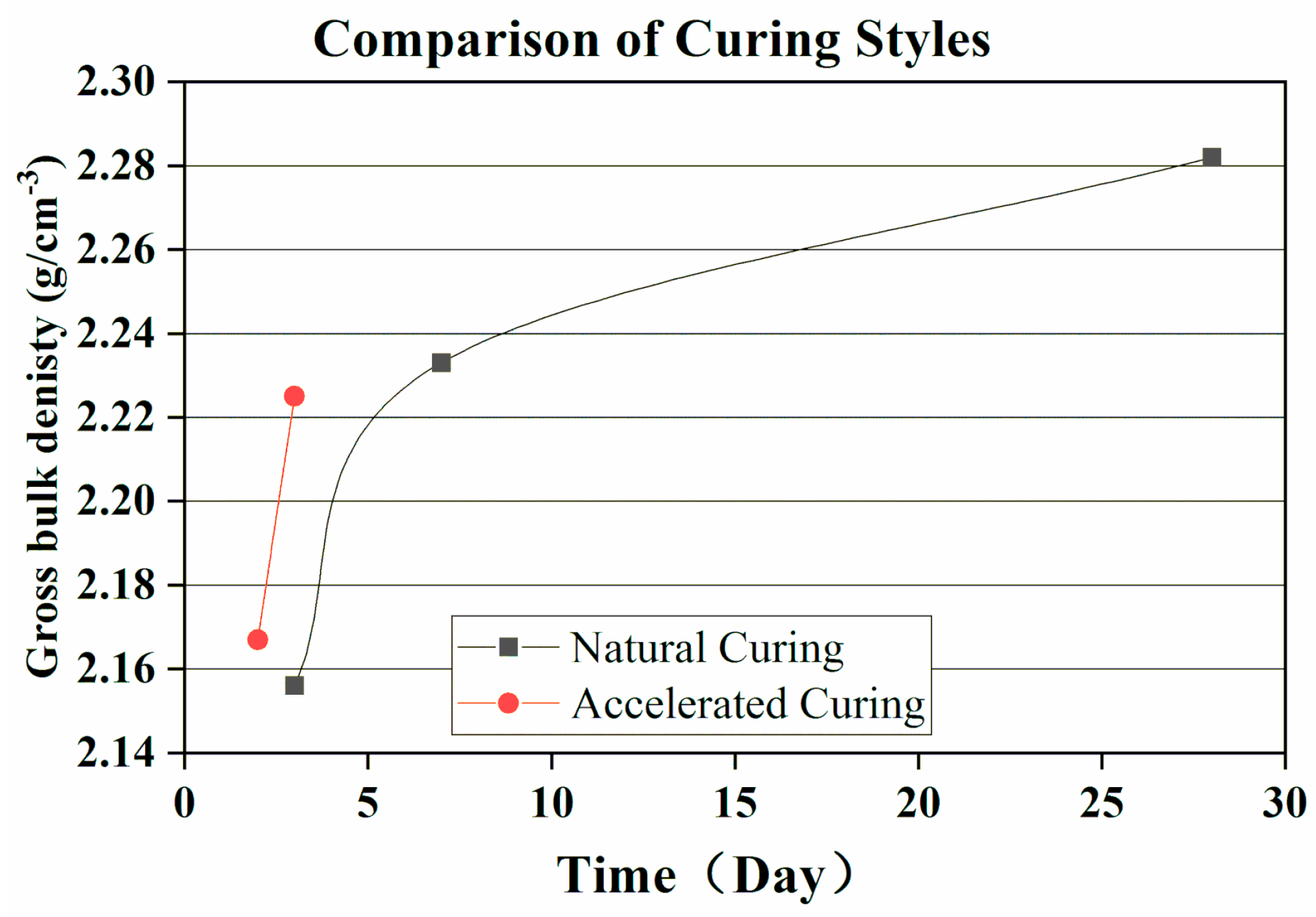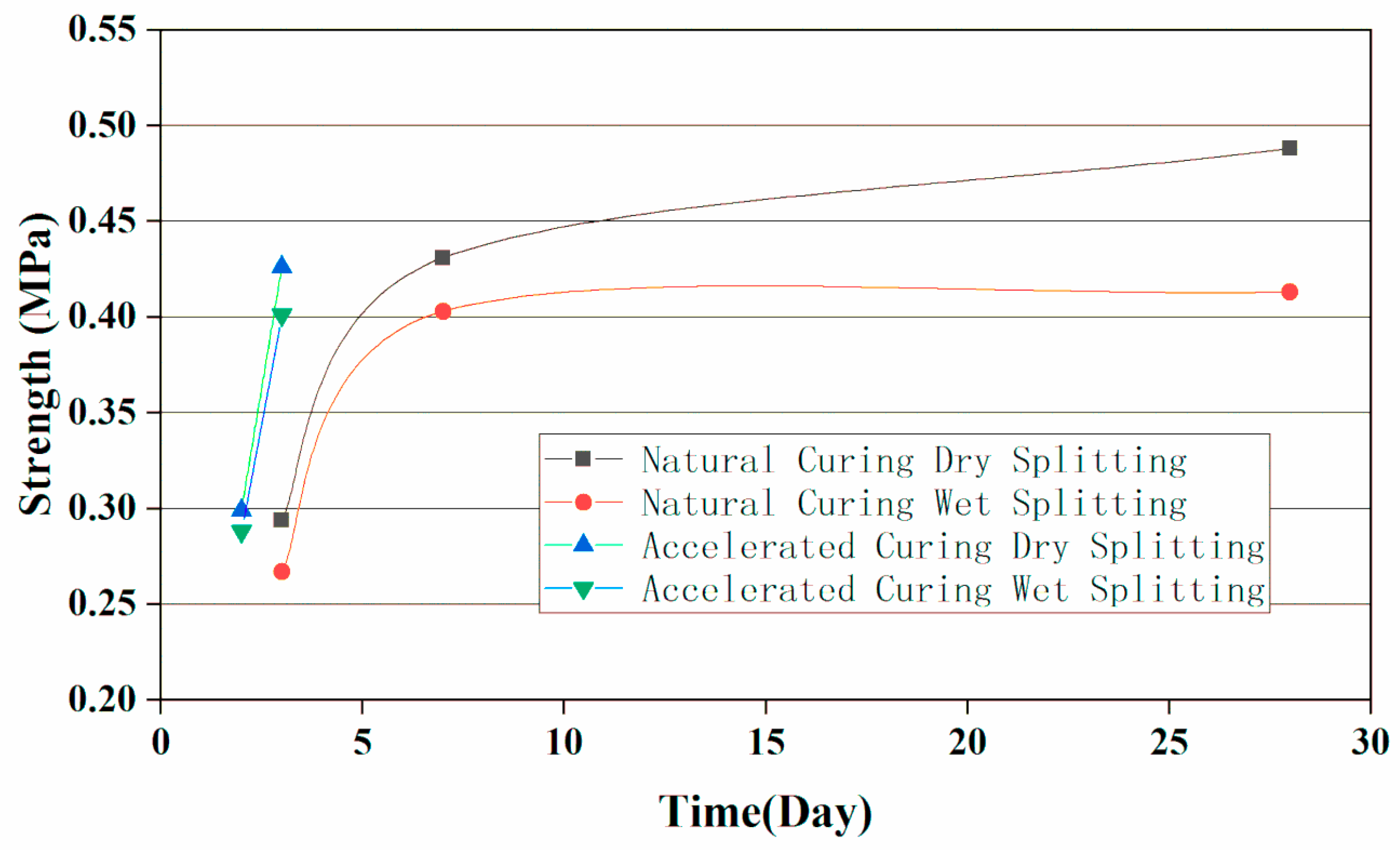1. Introduction
At present, a large number of constructed expressways have entered the stage of repairing, renovating and overhaul, the annual production of waste asphalt materials is as high as 230 million tons in China. It has been more and more important to recycle and reuse RAP materials for the sustainable development of highway engineering [
1,
2].
There have been lots of researches of RAP materials in Japan, Europe and America, and the achievements could be used to guide the applications of RAP materials. S. Singh et al. researched the effects of two components of RAP on optimum moisture content (OMC), maximum dry density (MDD), compressive strength, water absorption rate and permeability void ratio [
3]. G. Bharath et al. presented the details of a laboratory study on the evaluation of the fatigue characteristics of asphalt mixtures containing Recycled Asphalt Pavement (RAP) material using controlled stress indirect tensile fatigue test (ITFT) [
4]. J. M. Costa et al. focused on the relationship between the elastic modulus of RAP materials and volume stress [
5]. S. K. Pokharel et al. researched asphalt in the RAP materials [
6]. R. A. Tarefder et al. conducted physical performance testing and strength testing of RAP materials in the laboratory. The physical performance included moisture content, grading, specific gravity, emulsion content, aggregate properties, coating and adhesion tests. Strength testing mainly refer to the indirect tensile strength test, in addition to resistance, moisture-induced damage sensitivity test and rutting test [
7]. A. Widayanti et al. used SEM imaging technology to observe the morphology and surface texture of the RAP materials [
8].
Also, Y. N. Li et al. evaluated the effects of emulsified asphalt and cement on the porosity, indirect tensile strength, tensile strength ratio, dynamic stability and mechanical properties of RAP materials [
9]. X. Zhang made an in-depth research on the RAP materials treatment process from four aspects: Method of recycling RAP materials, selection of crushing equipment, old material screening process, storing and testing [
10]. F. Ye et al. researched the layered aging regulation of asphalt stratification on the surface of RAP materials [
11]. T. Ma et al. researched the effects of aging properties in asphalt on the performance of 48 RAP materials by measuring the low temperature performance of mortar with bending beam 49 rheometer (BBR) [
12].
However, there has not been a uniform conclusion on the research of RAP materials compaction methods abroad. Some of the compaction methods are mainly selected according to different design methods of recycling asphalt mixtures. Generally, the Marshall compaction method is used to mold specimens for the Marshall design method. The kneading method is used for Hveem method. The gyratory compaction method is used for Superpave design method, which is more popular in the U.S. and Sweden [
13,
14,
15].
H. Y. Wei et al. used the method of vibration compaction specimens and determined the maximum dry density and the optimum moisture content of RAP materials [
16]. Z. F. Wu et al. believed that the revised Marshall compaction method was the focus of researching, the modified Marshall compaction method generally divides the compaction of the specimens into two parts, the first time is carried out after the mixture is put into the mold, and the second time is carried out after curing in the mold of the specimens for a period of time, and the influence of the curing method on the specimens is mainly researched [
17]. Z. G. Li et al. used vibration compaction, static pressure compaction, Marshall compaction and rotary compaction specimens to compare and analyze the mechanical strength of the mixture of different compaction methods [
18].
Although the cold recycling technology of RAP materials have been studied abroad, there is still a lack of research on the accurate evaluation on the residual strength characteristics of RAP materials, the compaction methods of cold recycled mixtures, as well as the effects of composite proportion on the performances [
19]. So, this paper focuses on the basic composition and performance evaluation of RAP materials, especially the residual strength characteristics. The emulsified asphalt was applied to cold recycling RAP materials, and the vibratory compaction and heavy-duty compaction methods (Proctor compaction method) were compared. In addition, the effects of wetting water, emulsified asphalt dosage and curing conditions on the performance of the specimens were also investigated.
3. Results and Discussions for the RAP Materials
3.1. Moisture Content in RAP Materials
The moisture content analysis result is shown in
Table 1.
The moisture content in the RAP materials was tested to be relatively high at 2.5%. There are many reasons for the high moisture content of the RAP materials, on the one hand, during the long-term use of the old roads, rainwater seeps down, due to cracks and gaps in the road surface, on the other hand, since the RAP materials usually need to be piled up for a period of time, with the effects of rain and air humidity, the moisture content of the RAP materials will also increase.
Engineering experience shows that the increase of moisture content will cause obvious negative impacts on the recycling of asphalt pavement. On the one hand, for cold recycling emulsified asphalt, the existence of a large amount of water is equivalent to the increase of actual water addition, which affects the rolling effect of recycled pavement; On the other hand, excessive moisture content will cause the moisture content of different layers to be inconsistent when the RAP materials are stacked, thus increasing the variability in the recycled construction. Therefore, in order to reduce the moisture content of the RAP materials, the RAP materials should not be carried out in a rainy day or just rained day; and for the storage of RAP materials, necessary covering should be carried out to reduce the impact of rain.
3.2. Asphalt Content, Basic Properties and Aggregates Gradations
The asphalt content of the old material was tested to be relatively low at 3.44%. On the one hand, because the RAP materials contain the mixture of the middle and lower surface layers, the asphalt content is relatively low, and on the other hand, due to the long-term use of the asphalt pavement and the scouring effect of moisture, some asphalt is lost.
After testing the three major indexes of the RAP materials, the penetration is 2.6 mm, the softening point is 62 °C, and the ductility is 23 cm. The penetration is obviously lower than that of No.70 asphalt originally used, while its deformation ability is obviously attenuated.
Figure 4 shows the results of the RAP materials extraction test.
Note:
Figure 4,
Figure 5,
Figure 6,
Figure 7,
Figure 8,
Figure 9,
Figure 10,
Figure 11,
Figure 12,
Figure 13,
Figure 14,
Figure 15,
Figure 16,
Figure 17 and
Figure 18 are all made by Origin (A software developed by OriginLab).
It can be seen from
Figure 4 that the overall gradation of the RAP materials before and after extraction is relatively close, the overall performance is unimodal, with the peak appearing in the particle with a particle size of 4.75 mm. The production of a large number of 4.75 mm particles is, on the one hand, related to the composition characteristics of the original gradation, on the other hand, related to the mechanical crushing during the milling process. A large number of generated 4.75 mm particles contribute to the formation of skeleton structure in the later recycling mixture.
At the same time, comparing the grading curves before and after extraction, we can see that the main difference between the two is in the proportion of particles >19 mm and <0.15 mm. Through extraction, it can be found that the original >19 mm particles in the RAP materials basically disappeared, while a large number of <0.15 mm particles were generated. In other words, the original particles of >19 mm in the RAP materials can basically be regarded as a particle group composed of a plurality of particles of different particle sizes, and the particles still rely on the bonding effect of old asphalt, the particles of <0.15 mm in the RAP materials are basically bonded to the particles of various particle sizes to form a particle group. Therefore, when the RAP materials are used for recycling, the performance of the recycled mixture depends not only on the new binder added, but also on the performance of the aged binder in the RAP lump [
30].
3.3. Calculation and Analysis of Specific Surface Area
Figure 5 shows the analysis results of the specific surface area of RAP materials.
It can be seen from
Figure 5 that the total specific surface area of the RAP materials is smaller when it is before extraction, and its specific surface area increases rapidly after extraction, the specific surface area after extraction is more than three times that before extraction.
After adding new materials, it can be seen that the specific surface area of the mixture increases obviously due to the addition of new aggregate and mineral powder; compared with the grading after extraction, it can be seen that the ratio of the specific surface area of the mixture to the total specific surface area of the mixture has increased to about 60%. However, the surface area bonded by the old asphalt still accounts for about 40% of the total surface area of the mixture, it is indicated that even if new materials are added to the cold recycling mixture, the influence of the old material particles on the entire recycled mixture cannot be ignored.
In addition, when the cold recycling mixture is stressed, both the surface bonded by the new cementing material and the surface bonded by the old asphalt may be damaged under the effects of the load. It is calculated that the surface area bound by the new cement only accounts for 30.7% of the total surface area, that is, in the cold recycling mixture, a large number of interfaces are bonded by the original aged asphalt in the road surface.
It can be seen from the above specific surface area test results that in the recycled mixture, there is a large amount of surface area inside the RAP lump, this part of the surface area is generally not bonded by the new binder, but only relies on the original aged asphalt to play a binding role, so it is necessary to test the strength of this part to evaluate the role of the RAP lump in the recycled mixture.
3.4. Residual Cohesion of RAP Materials
Figure 6 shows the triaxial test results of RAP materials.
As can be seen from
Figure 6, after the RAP materials are extracted, only the aggregates with different particle sizes are left in the mixture, as can be seen from the triaxial test results, the aggregate has the largest internal friction angle, due to the absence of asphalt film barrier, and the mixture at this time is closer to graded crushed stone.
The triaxial test results of the specimen compacted by direct static compression of the RAP materials without heating show that the internal of the specimens has begun to form a certain cohesive force, this part of the cohesion is provided by the aged asphalt film on the surface of the old aggregate, because it has not been heated, the aged asphalt film cannot be re-wrapped during the compaction process. It is entirely dependent on the extrusion process between the particles during the static pressure compaction process to form a new asphalt film adhesion. Although this cohesive force is much smaller than that in the newly mixed asphalt mixture, it has fundamentally changed the strength characteristics of the specimens, changing the loose material similar to graded broken stones into an integral material. RAP is often referred to as “black rock” in the United States, Europe countries except for China, its properties are mainly determined by aggregate, the residual asphalt only changed the surface color of the aggregate, but has almost no effect on performance. It can be seen from the above test results that the argument of “black rock” is not sufficient, and the residual asphalt can play a certain bonding role even under cold recycling conditions. In other words, for the old RAP materials, if the compaction can be strengthened in the process of recycling, so that the particles can play a bonding role again by means of the residual aged asphalt film on the surface of the RAP materials, the strength of the recycled mixture will be improved [
31].
Comparing the results of the second group (unheated) and the third group (heating at 60 °C for 10 h) in
Figure 6, it can be seen that the effects of low temperature heating on the strength of the RAP materials are not obvious. In the test results of the fourth group (heated at 60 °C for 24 h), the cohesive force was significantly increased, which may be relative to the viscosity increase caused by the aging of the asphalt film after long-term heating. In the fifth group (heating at 120 °C for 16 h), the heating temperature at 120 °C is close to the heating temperature of the RAP materials during warm recycling, it can be seen that the cohesive force inside the specimen is greatly increased at this time, it shows that the old asphalt has been redistributed and wrapped at this time, which has a better bonding effect and further improves the integrity of the specimen. Therefore, from the perspective of fully exerting and utilizing the adhesive effects of the old asphalt residue, the effects of warm recycling are obviously better than that of cold recycling.
3.5. Strength of RAP Lump
Figure 7 shows the test results of the strength of the RAP lump with different cement mortar contents, and
Figure 8 shows the test results of the strength of the new and old specimens with different cement contents.
It can be seen from
Figure 7 that the regression correlation of the test results is not high, due to the obvious discreteness of the RAP lump. However, it can still be seen that with the increase of the proportion of mortar, the strength of the specimens is obviously improved—that is, the strength of the specimens decreases with the increase of the content of the RAP lump. Extrapolating the regression curve, it can be obtained that when the cement content is zero, the splitting strength of RAP lump is 0.62 MPa. Referring to the current Chinese specification “Technical Specification for Highway Asphalt Pavement Regeneration 2008”, the specification requires that the splitting strength of emulsified asphalt cold recycled mixture used for the lower layer is 0.5 MPa, so the data we obtained meets and is slightly higher than the specification requirements, to a certain extent, this shows that there is a certain basis for stipulating the cold recycling mixture in the current specification [
32]. According to the test results of the specific surface area proportion and strength of the RAP lump in the cold RAP materials, it can be seen that the strength of the cold RAP materials cannot be very high because the strength of the RAP lump in the cold RAP materials is lower and the proportion is high. Therefore, excessive requirements for the strength of cold RAP materials should not be imposed.
It can be seen from
Figure 8 that under the conditions of the same gradation, the same cement, the same amount of cement and the same water-cement ratio, the strength of the specimens prepared with the RAP materials is obviously different from that prepared with the new materials. When the new aggregate is used to prepare the specimens, the strength of the specimens increases linearly with the increase of the cement dose; however, when the old aggregate is used to prepare the specimens, the strength of the specimens shows a significant nonlinearity with the increase of the cement dose, when the cement dosage is less than 2%, the strength of the specimens has a significant increase trend, but when the cement dosage of cement is further increased, the strength of the specimens has an inflection point, which is no longer significantly increased, and the strength of the specimens is stable at about 0.5 MPa. Compared with the 1 MPa of the new aggregate specimens, it is doubled.
The above test results show that the cold RAP materials are composed of RAP lump, so its strength composition is obviously different from that of hot asphalt mixtures. The inherent Strength of RAP lump limits the strength of the cold RAP materials to a large extent. Therefore, for cold recycling technology, it is not important to put forward too high requirements on its strength, but to obtain excellent comprehensive performance for its strength characteristics, at the same time, carrying out targeted structural design according to its performance characteristics [
33].
4. Performance and Affecting Factors of Vibratory Compaction Emulsified Asphalt Cold Recycling Mixture
4.1. Specimens Preparation by Using Vibration Compaction and Heavy-Duty Compaction Methods
The heavy-duty compaction specimens are made when the hammer falls freely vertically at a certain height, and the cold RAP materials are hammered many times. In this paper, NX-SKDJ-I heavy-duty compaction instrument is used to compact cold RAP material specimens. The main parameters are: Hammer weight 4.5 kg, drop weight 450 mm and the hammering time is calculated to be 4 min and 30 s according to the hammering work of 2684.9 kJ/m. Vibratory compaction of cold RAP materials is making the friction force between the mixture gradually change from the initial static friction state to the dynamic friction state under the action of vibration, the frictional resistance is reduced, and the internal displacement of the mixture is formed and squeezed tightly. In this paper, TH-05 vibratory compaction instrument is used, and the main parameters adjusted in the experiment are: Static pressure is 2000 N, excitation force is 6900 N, excitation frequency is 30 HZ, the vibration time is 1–2 min, and the compaction function is adjusted by changing the vibratory compaction time.
Grading for cold recycling test and research is shown in
Table 2.
4.1.1. Specimens Preparation with Different Compaction Methods
First, re-water was added into the emulsified asphalt, then the emulsified asphalt here comprises of matrix asphalt, emulsifier, auxiliary reagent and water; wherein the emulsifier uses cationic emulsifier, and the auxiliary reagent uses acid-base auxiliary reagent. Then added into RAP materials together, stirring for 45 s, and the specimens were molded by vibratory compaction. Two groups of experiments were carried out, and five specimens were molded in each group. Using 2% and 3% asphalt content, respectively, to obtain two groups of optimum moisture content [
34].
On the premise of optimum moisture content, vibration compaction was adopted to mold the specimens, and the influence of wetting water on the specimens was researched, that is, whether wetting water needs to be added into RAP materials first. The adding method of emulsified asphalt without adding wetting water is as follows: Firstly, the designed additional wetting water is added into emulsified asphalt, mixing for 45 s, then the mixed emulsion is added into the RAP materials and mixing for 45 s again [
35]. The adding method of emulsified asphalt with adding wetting water is as follows: Firstly, the designed additional wetting water is added into the RAP materials, mixing for 45 s, then the quantitative emulsified asphalt is added and mixing for 45 s again.
Using 2% and 3% asphalt dosage respectively, four groups of tests (2% asphalt dosage without wetting water, 3% asphalt dosage without wetting water, 2% asphalt dosage with wetting water, 3% asphalt dosage with wetting water) were carried out. Six specimens were molded in each group of tests, and the maximum dry density figures were measured and analyzed.
The preparation process of heavy-duty compaction and vibration compaction specimens is the same, and the experimental results are analyzed [
36].
In order to compare the influence of wetting water on compressive strength furtherly, in this paper, based on the recommended gradation, appropriate changes are made, and the amount of cement added was 2%, the specimens were molded by vibratory compaction method, two specimens were prepared for each gradation. The compressive strength was measured seven days later, and the influence of the wetting water on the strength was further analyzed [
37]. The gradation design is shown in
Table 3.
Five matrix asphalt contents of emulsified asphalts were selected for research, which were 0% (Pure water), 30%, 40%, 50%, and 60%, respectively. A total of 30 specimens were prepared by vibration compaction, the maximum dry density and the optimum fluid content of emulsified asphalt with different matrix asphalt contents were obtained by selecting different fluid dosages.
4.1.2. Vibratory Compaction Specimens Preparation under Different Curing Conditions
In order to research the relationship between the strength formation and water loss, the above-mentioned gradation B was selected. Using the asphalt content was 4%, the cement dosage was 2%, vibratory compaction the specimens, and the aggregate under natural curing conditions was controlled, measuring the daily mass loss. Five groups of experiments were carried out, namely, natural curing for three days, natural curing for seven days, natural curing for 28 days, accelerated curing (curing in a ventilated oven at 40 °C) for two days and accelerated curing for three days, two specimens were prepared for each group of tests, determined the gross volume density of the specimens.
According to the above-mentioned optimal asphalt content and reasonable cement mixing ratio, two groups of cold recycled mixture are prepared, one group is naturally cured, and the other group is accelerated. After natural curing (25 °C), the dry-wet splitting strength at 15 °C (kept in the oven inside for at least 4 h) was measured. The curing method corresponding to the wet splitting strength was: Soaking for one day on the last day of natural curing days. The accelerated curing shall be carried out in an oven at 40 °C with watering regularly. During curing, then measuring its wet and dry splitting strength [
38].
4.2. Maximum Dry Density Comparison of Heavy-Duty Compaction and Vibratory Compaction Specimens
The relationship between dry density and moisture content of heavy-duty compaction specimens is shown in
Figure 9 and
Figure 10. The relationship between dry density and moisture content of vibratory compaction specimens is shown in
Figure 11 and
Figure 12.
It can be seen that the optimum moisture content of the RAP materials with heavy-duty compaction and different asphalt content is the same, both being 4.1%. With heavy-duty compaction, the difference in asphalt content has almost no effect on the maximum dry density at optimum moisture content. With heavy-duty compaction, the addition of wetting water has almost no effect on the maximum dry density at different asphalt contents. With vibratory compaction, the optimum moisture content decreases with the number of asphalt increases. With vibratory compaction, the difference in asphalt content has almost no effect on the maximum dry density at the optimum moisture content. With vibratory compaction, whether the wetting water is added or not has almost no effect on the maximum dry density under different asphalt contents.
Comparing and analyzing the two methods of heavy-duty compaction and vibratory compaction, we can find that: The maximum dry density of vibratory compaction method is about 2.25 g/cm3, and that of heavy-duty compaction method is about 2.04 g/cm3. The maximum dry density of the specimens molded by vibratory compaction method is closer to the maximum dry density on site (the collected maximum dry density in the filed project was 2.21 g/cm3). Therefore, in the subsequent research, the emulsified asphalt cold recycling mixture was molded by vibration compaction. When the asphalt content is 2%, the optimum moisture content determined by heavy-duty compaction and vibratory compaction is approximately the same, about 4%; When the asphalt content is 3%, the optimum moisture content determined by vibratory compaction is slightly smaller than that determined by heavy-duty compaction. Whether it is heavy-duty compaction or vibratory compaction, whether wetting water is added or not has almost no effect on the dry density of the compacted specimens.
6. Conclusions
Based on the research on the basic properties of RAP materials, the methods and influencing factors of vibration compaction and heavy-duty compaction are compared and analyzed, and the following conclusions are drawn in this paper:
(1) The RAP materials contain a certain amount of water, which has a certain influence on the performance of RAP materials. Due to the bonding of asphalt and other reasons, its fine aggregate content is less than normal, so new materials need to be added in gradation design.
(2) Through the calculation of specific surface area, it can be seen that the proportion of RAP lump in the cold recycling mixture is relatively high. Meanwhile, indoor simulation tests show that the strength of RAP lump is relatively low, which greatly limits the overall strength of the recycled mixture.
(3) Triaxial tests show that even at normal temperature, through proper compaction, the aged asphalt in RAP can still play a bonding role, which helps to improve the performance of recycled mixture. However, its bonding strength is much lower than that of warm recycling.
(4) The vibratory compaction is more practical than heavy-duty compaction. It is recommended to use the vibratory compaction method to determine the maximum dry density and optimum water content of the emulsified asphalt cold recycling mixture. With the vibratory compaction method, when the emulsified asphalt is mixed uniformly, whether adding wetting water or not has little effect on the strength of molded specimens.
(5) When the matrix asphalt content of emulsified asphalt is 30%~60%, it can be regarded as water added into the cold recycling mixture directly, which greatly simplifies the mixing process of the cold recycling mixture.
(6) The intensity of accelerated curing at 40 °C for two days and natural curing for three days should be roughly equivalent, while that of accelerated curing at 40 °C for three days and natural curing for seven days should be roughly equivalent, which provides a basis for laboratory short-term indoor experiments.
